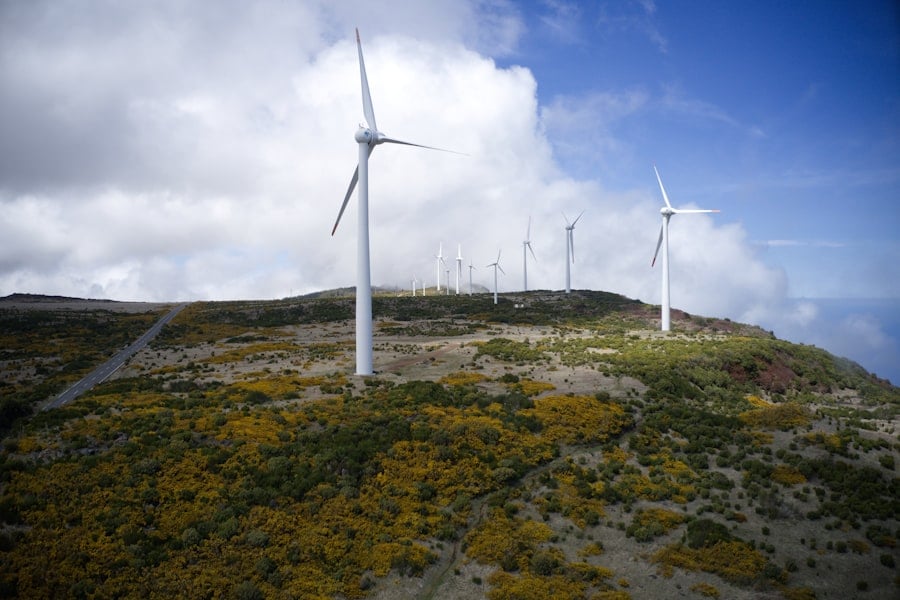In the realm of renewable energy, local capacity building is not merely a beneficial addition; it is a fundamental necessity. As communities around the globe grapple with the impacts of climate change and the urgent need for sustainable energy solutions, empowering local populations to take charge of their energy futures becomes paramount. Local capacity building involves equipping individuals and organizations with the skills, knowledge, and resources necessary to develop, implement, and maintain renewable energy projects.
This approach not only fosters self-sufficiency but also ensures that projects are tailored to the unique needs and contexts of the communities they serve. Moreover, local capacity building enhances community resilience. When local stakeholders are actively involved in renewable energy initiatives, they are more likely to support and sustain these projects over time.
This engagement leads to a deeper understanding of the technology and its benefits, fostering a sense of ownership among community members. As a result, renewable energy projects are more likely to thrive, creating jobs, reducing energy costs, and contributing to environmental sustainability. By prioritizing local capacity building, NGOs can create a ripple effect that empowers communities to become leaders in the transition to renewable energy. Are You Working on Solar Innovation or Clean Energy Access? Join us to receive updates.
Key Takeaways
- Local capacity building is essential for sustainable renewable energy projects
- Identifying potential renewable energy projects in the local community is the first step towards capacity building
- Engaging stakeholders and building partnerships is crucial for successful capacity building efforts
- Assessing the skills and resources needed for renewable energy projects is important for effective planning
- Developing training programs for local community members is key to building local expertise in renewable energy initiatives
Identifying Potential Renewable Energy Projects in the Local Community
The first step in fostering local capacity for renewable energy is identifying viable projects that align with community needs and resources. This process begins with a thorough assessment of the local environment, including geographical features, existing infrastructure, and energy consumption patterns. For instance, a community situated in a sunny region may benefit from solar energy initiatives, while those near rivers might explore hydroelectric options.
Engaging with community members through surveys or focus groups can provide valuable insights into their energy needs and preferences. Real-world examples abound where communities have successfully identified and implemented renewable energy projects. In rural India, for instance, villages have harnessed solar power to electrify homes and schools, significantly improving quality of life.
Similarly, in parts of Africa, wind energy projects have been developed in areas with consistent wind patterns, providing clean energy while creating jobs for local technicians. By leveraging local knowledge and resources, NGOs can help communities pinpoint projects that are not only feasible but also beneficial in the long term.
Engaging Stakeholders and Building Partnerships

Engaging stakeholders is crucial for the success of any renewable energy initiative. This involves identifying key players within the community—such as local government officials, business leaders, and residents—and fostering collaborative relationships among them. Building partnerships can amplify resources and expertise, making it easier to navigate challenges and implement projects effectively.
For example, an NGO might partner with a local university to access research expertise or collaborate with businesses to secure funding or technical support. Successful stakeholder engagement requires transparent communication and a commitment to inclusivity. Regular meetings and workshops can facilitate dialogue among stakeholders, allowing them to share ideas and concerns openly.
Involving diverse voices ensures that the project reflects the community’s values and priorities. A notable example is the partnership between NGOs and local governments in Brazil, where collaborative efforts have led to the successful implementation of community-based solar projects that prioritize social equity and environmental sustainability.
Assessing the Skills and Resources Needed for Renewable Energy Projects
Once potential projects have been identified and stakeholders engaged, the next step is to assess the skills and resources required for successful implementation. This assessment should encompass both technical skills—such as installation and maintenance of renewable energy systems—and soft skills like project management and community engagement. Conducting a skills inventory within the community can help identify existing capabilities as well as gaps that need to be addressed.
For instance, if a community is planning to install solar panels but lacks technicians trained in installation, it may be necessary to develop training programs or seek external expertise. Additionally, understanding available resources—such as funding opportunities, materials, and equipment—can inform project planning. A case study from Kenya illustrates this point: a community identified a lack of trained solar technicians as a barrier to implementing solar projects.
By partnering with vocational training institutions, they were able to develop a program that equipped local youth with the necessary skills, ultimately leading to successful project implementation.
Developing Training Programs for Local Community Members
Training programs are essential for building local capacity in renewable energy projects. These programs should be tailored to meet the specific needs of the community while also considering varying levels of prior knowledge among participants. A combination of theoretical knowledge and hands-on experience can enhance learning outcomes.
For example, workshops that include both classroom instruction on renewable energy principles and practical sessions on system installation can effectively prepare community members for active roles in projects. Moreover, leveraging local expertise can enrich training programs. Inviting experienced practitioners from within the community or nearby regions to share their knowledge can foster a sense of pride and ownership among participants.
In South Africa, for instance, community-led training initiatives have empowered individuals to become solar technicians, leading to job creation and increased access to clean energy. By investing in training programs that build both technical skills and confidence, NGOs can help communities take charge of their renewable energy futures.
Accessing Funding and Resources for Capacity Building

Securing funding is often one of the most significant challenges faced by NGOs working on renewable energy projects. However, various funding sources exist that can support capacity-building efforts. These include government grants, international development funds, private sector investments, and crowdfunding campaigns.
NGOs should actively research potential funding opportunities that align with their project goals and develop compelling proposals that clearly articulate the benefits of their initiatives. In addition to traditional funding sources, innovative financing models such as social impact bonds or green bonds can provide alternative avenues for securing resources. Collaborating with local businesses or philanthropic organizations can also yield financial support while fostering partnerships that enhance project sustainability.
A successful example comes from a community in Bangladesh that utilized microfinance to fund solar home systems for low-income households. By combining financial resources with technical training, they were able to create a sustainable model that empowered residents while addressing energy poverty.
Implementing Renewable Energy Projects with Local Expertise
With funding secured and training completed, it is time to implement renewable energy projects using local expertise. Engaging community members in every stage of implementation not only builds trust but also ensures that projects are culturally relevant and sustainable. Local technicians who have undergone training can take on roles in installation and maintenance, while community members can participate in project management tasks.
A notable example is found in Nepal, where community-managed micro-hydro projects have been successfully implemented across rural areas. These projects rely on local knowledge and labor for construction and maintenance, resulting in increased ownership and sustainability. By empowering local experts to lead implementation efforts, NGOs can create a sense of pride within the community while ensuring that projects are maintained effectively over time.
Monitoring and Evaluating the Impact of Capacity Building Efforts
Monitoring and evaluation (M&E) are critical components of any capacity-building initiative. Establishing clear metrics for success allows NGOs to assess the effectiveness of their efforts in real-time and make necessary adjustments along the way. M&E should encompass both quantitative data—such as energy output or cost savings—and qualitative feedback from community members regarding their experiences with training programs or project implementation.
For instance, an NGO working on solar energy projects in rural Mexico developed an M&E framework that included regular surveys of participants’ satisfaction levels as well as tracking changes in energy access over time. This approach not only provided valuable insights into project effectiveness but also helped build accountability among stakeholders. By sharing M&E findings with the community, NGOs can foster transparency and encourage ongoing engagement in future initiatives.
Addressing Challenges and Overcoming Barriers in Local Capacity Building
Despite best efforts, challenges will inevitably arise during capacity-building initiatives for renewable energy projects. Common barriers include limited access to technology, resistance from certain community members, or insufficient funding. To address these challenges effectively, NGOs must adopt a proactive approach that includes open communication with stakeholders and flexibility in project design.
For example, if resistance arises due to misconceptions about renewable energy technologies, conducting informational sessions or workshops can help dispel myths and build understanding within the community. Additionally, forming alliances with local leaders who support renewable energy initiatives can help sway public opinion in favor of projects. A case study from Tanzania illustrates this point: when faced with skepticism about solar technology among some villagers, an NGO collaborated with respected local leaders to advocate for the benefits of solar power, ultimately leading to widespread acceptance.
Sharing Best Practices and Lessons Learned with Other Communities
As communities successfully implement renewable energy projects through capacity building, it is essential to share best practices and lessons learned with others facing similar challenges. This exchange of knowledge can foster collaboration among communities and inspire innovative solutions tailored to specific contexts. NGOs can facilitate this sharing through workshops, conferences, or online platforms where communities can showcase their successes and learn from one another.
For instance, an NGO working across multiple regions might organize an annual conference where representatives from different communities come together to share their experiences with renewable energy projects. Such gatherings not only promote learning but also create networks of support among communities striving for similar goals. By fostering a culture of collaboration and knowledge-sharing, NGOs can amplify the impact of their capacity-building efforts across broader regions.
Sustaining and Expanding Local Capacity for Future Renewable Energy Projects
Sustaining local capacity for future renewable energy projects requires ongoing commitment from both NGOs and community members. This involves continuous training opportunities to keep skills up-to-date as technology evolves and ensuring that local experts remain engaged in project management roles. Additionally, establishing mechanisms for ongoing support—such as mentorship programs or peer networks—can help maintain momentum within the community.
Expanding local capacity also means exploring new opportunities for innovation within renewable energy sectors. As communities gain confidence in their abilities to manage existing projects, they may be inspired to explore additional technologies or approaches—such as energy efficiency measures or hybrid systems that combine multiple renewable sources. A successful example comes from a cooperative in Brazil that began with a single solar project but has since expanded its efforts to include wind energy initiatives as well.
In conclusion, building local capacity for renewable energy projects is a multifaceted process that requires careful planning, collaboration, and ongoing support. By understanding community needs, engaging stakeholders effectively, providing targeted training programs, securing funding resources, implementing projects with local expertise, monitoring progress diligently, addressing challenges proactively, sharing knowledge widely, and sustaining efforts over time—NGOs can empower communities to take charge of their renewable energy futures while contributing meaningfully to global sustainability goals.









































